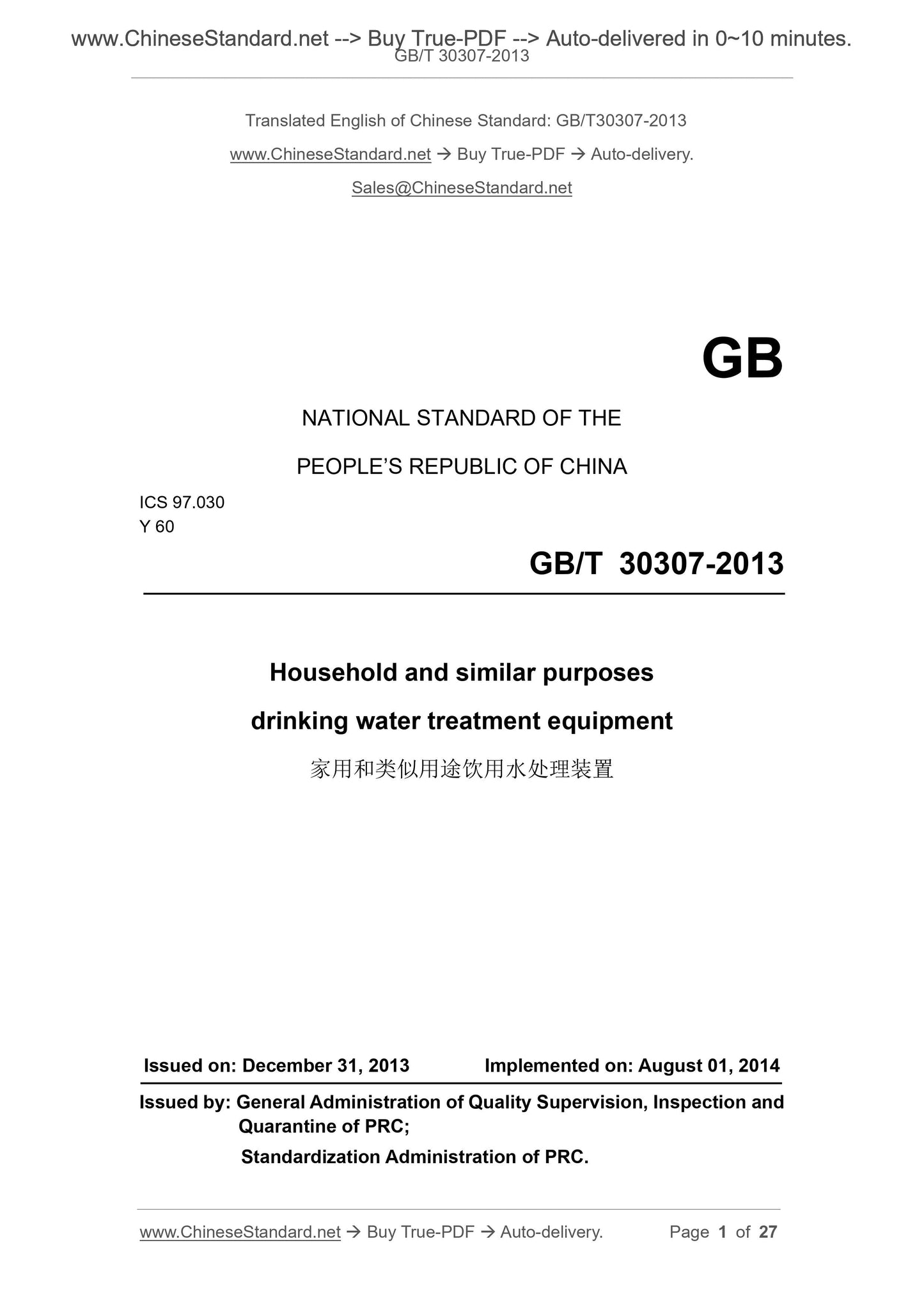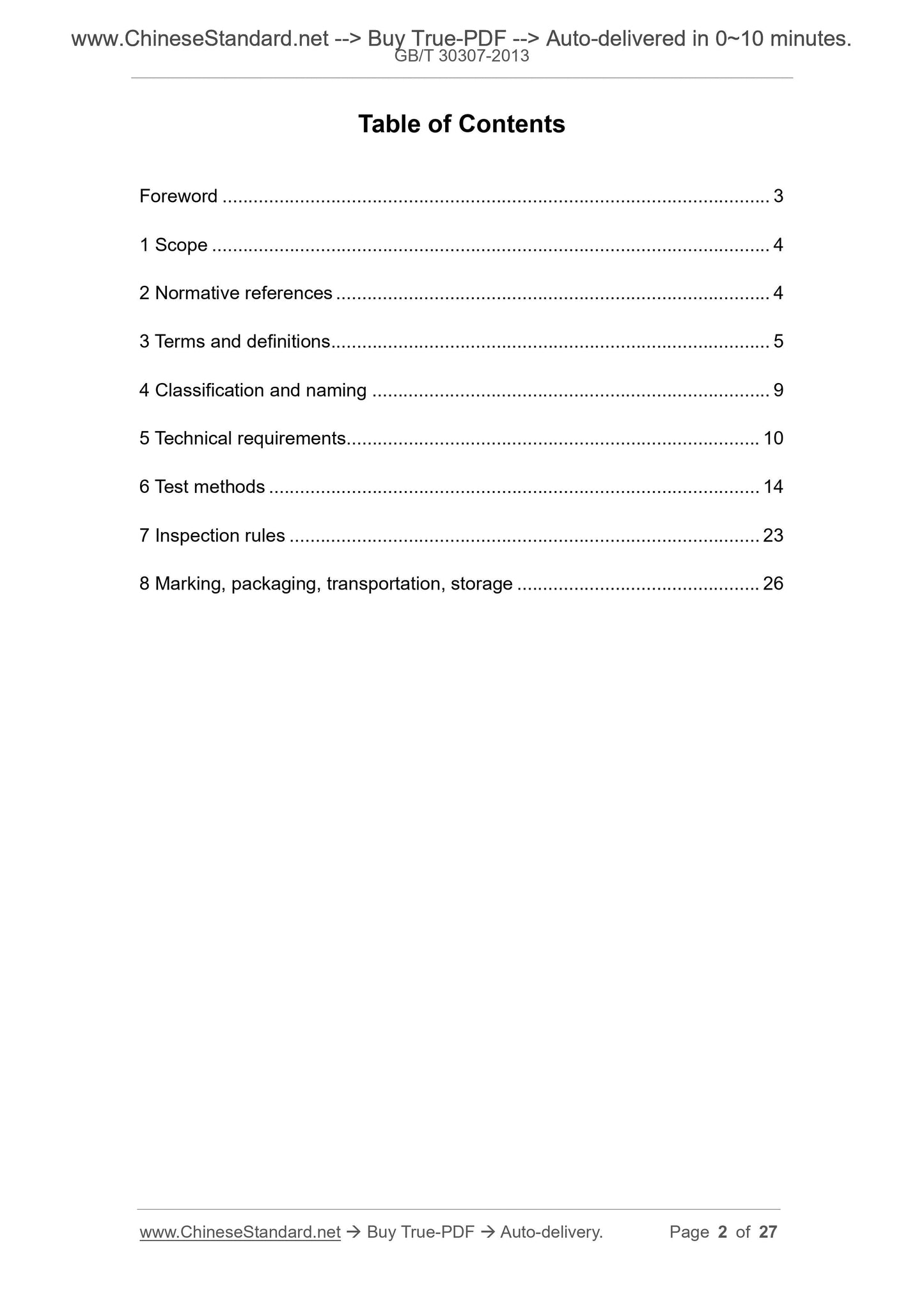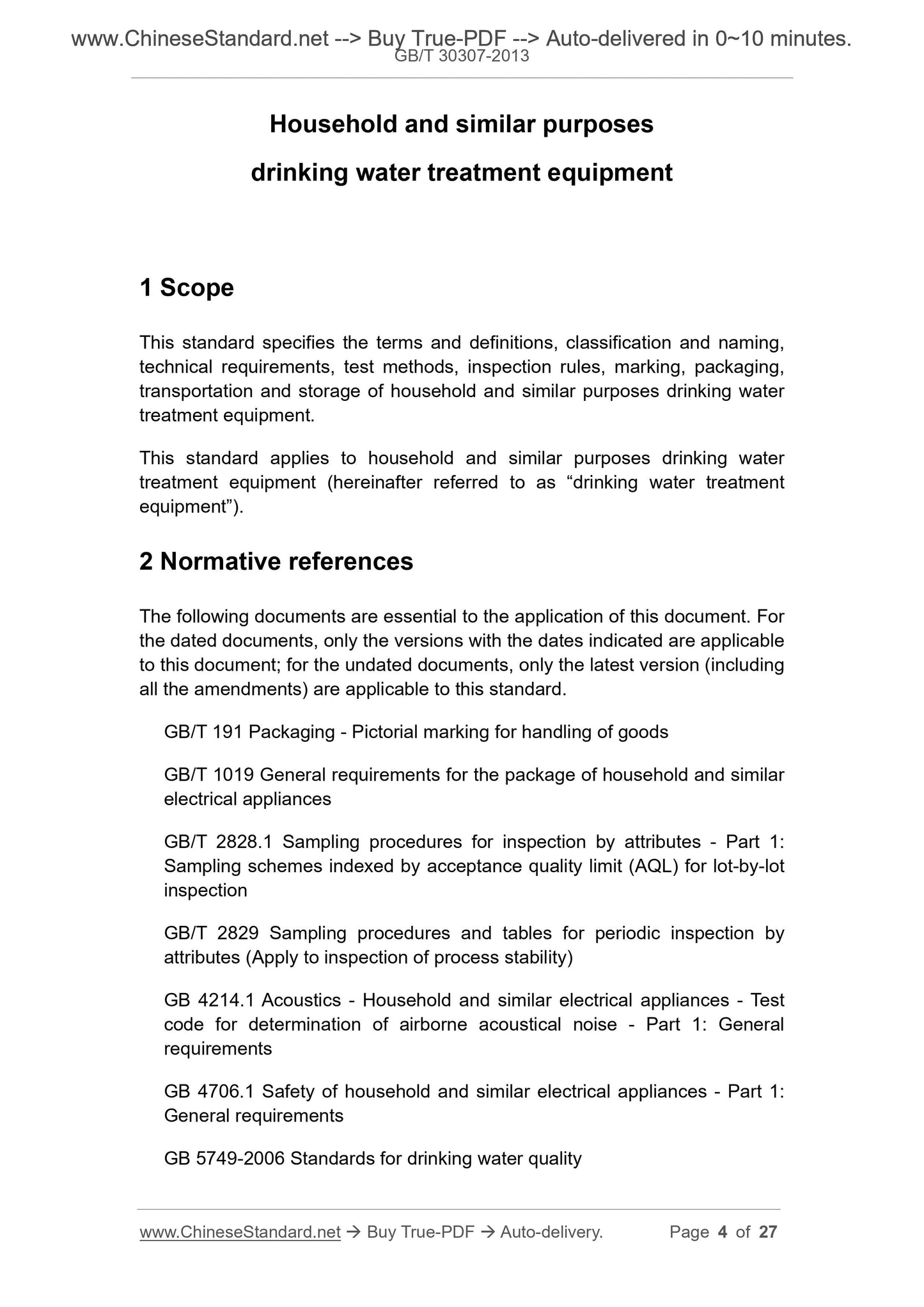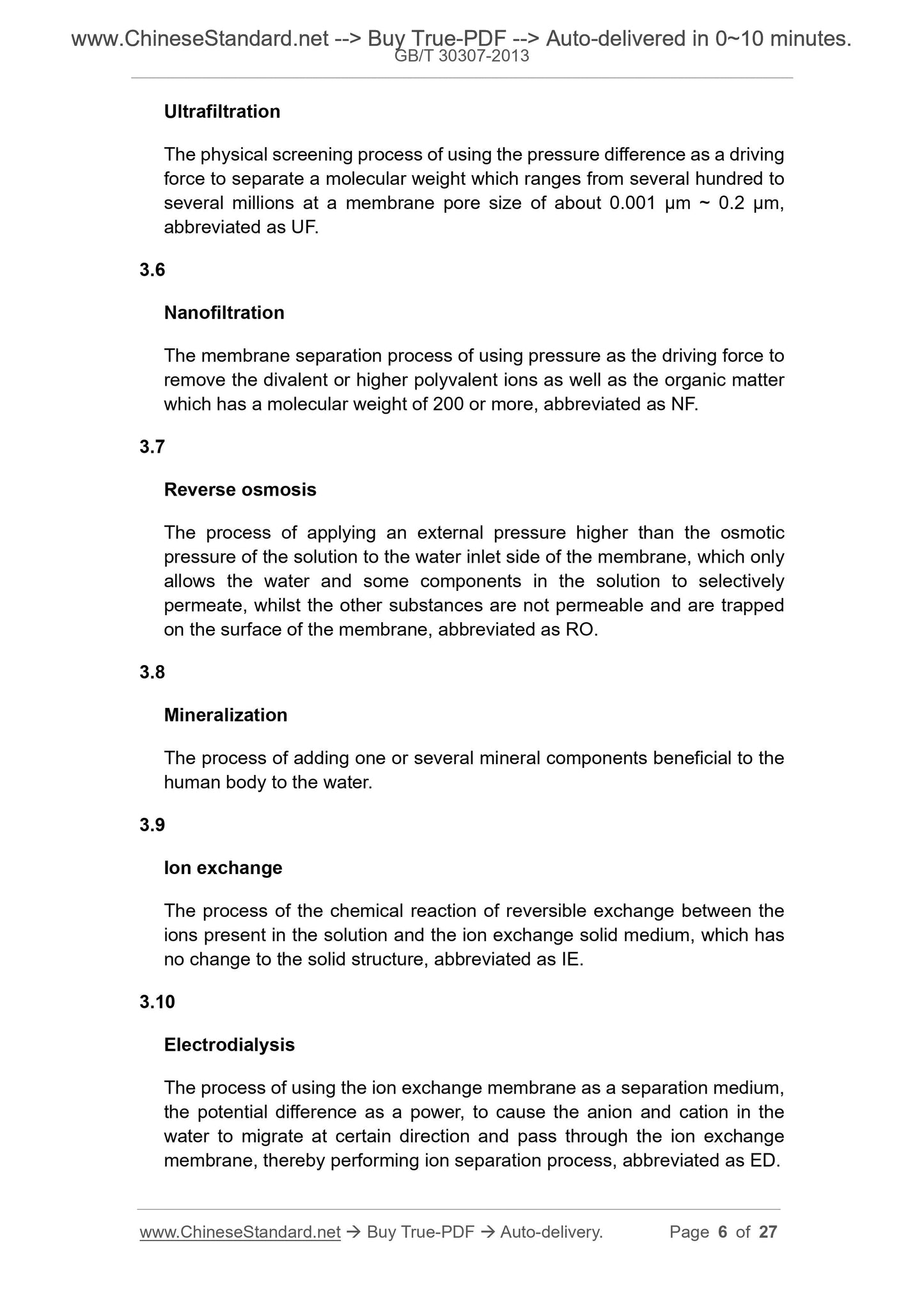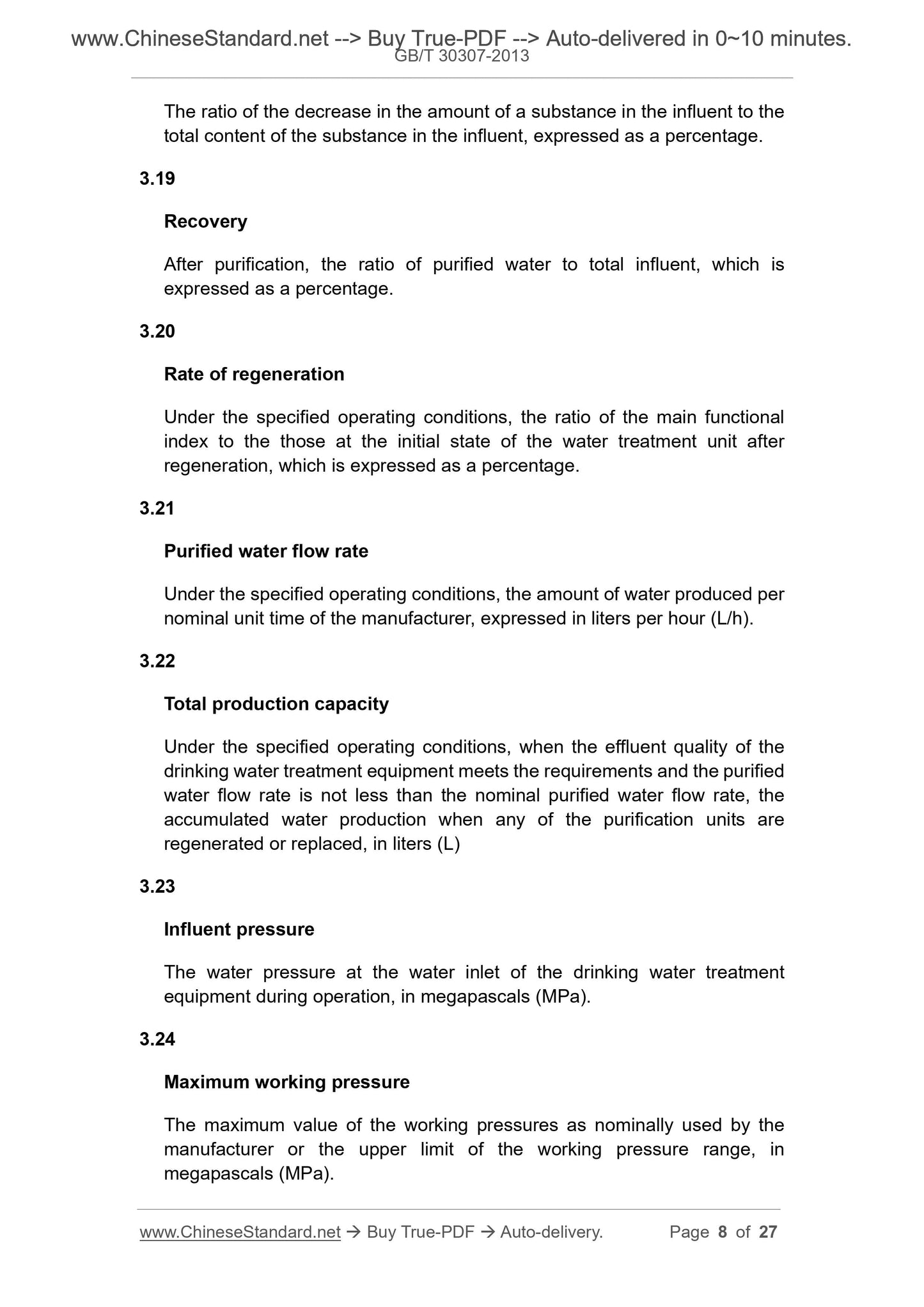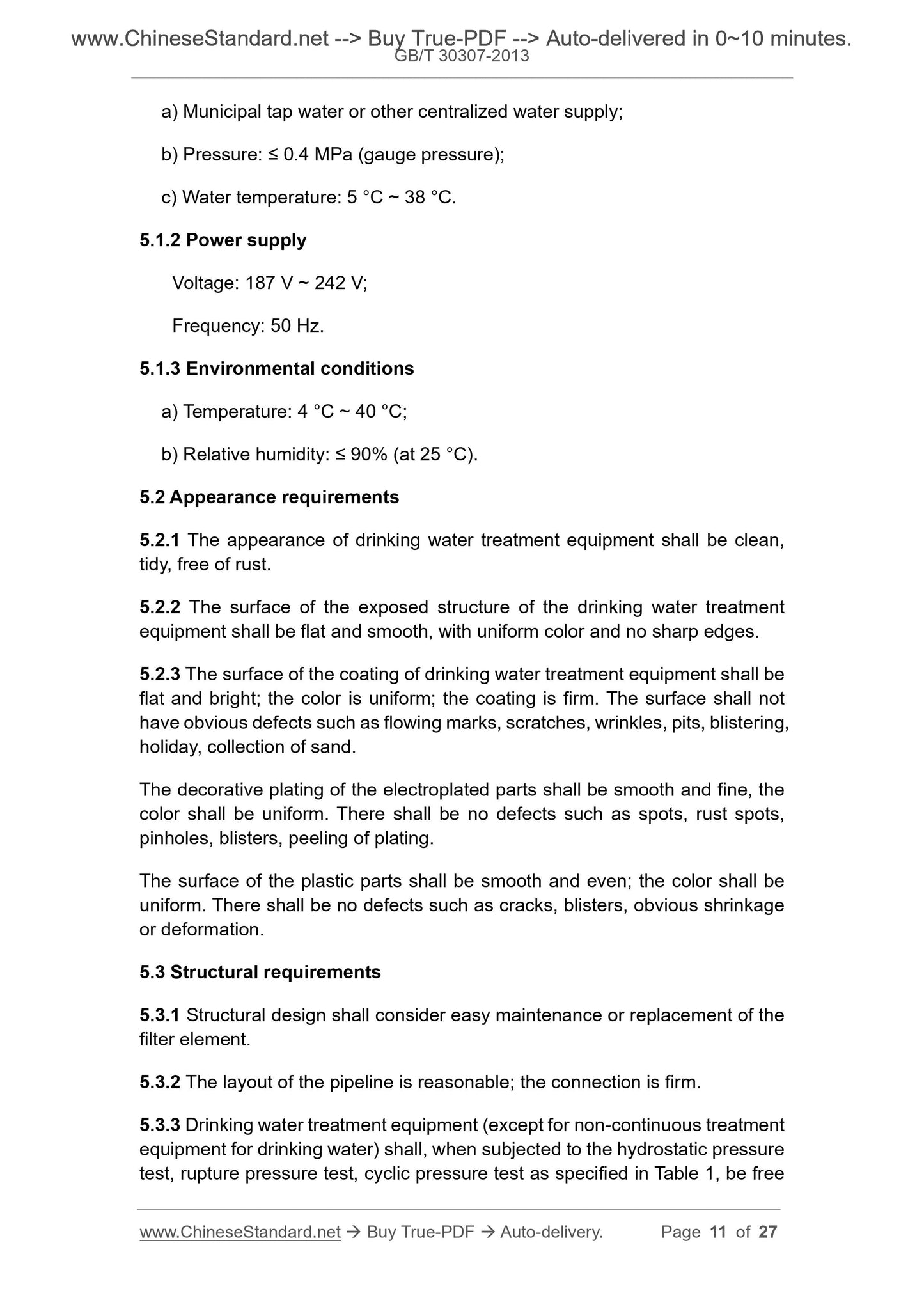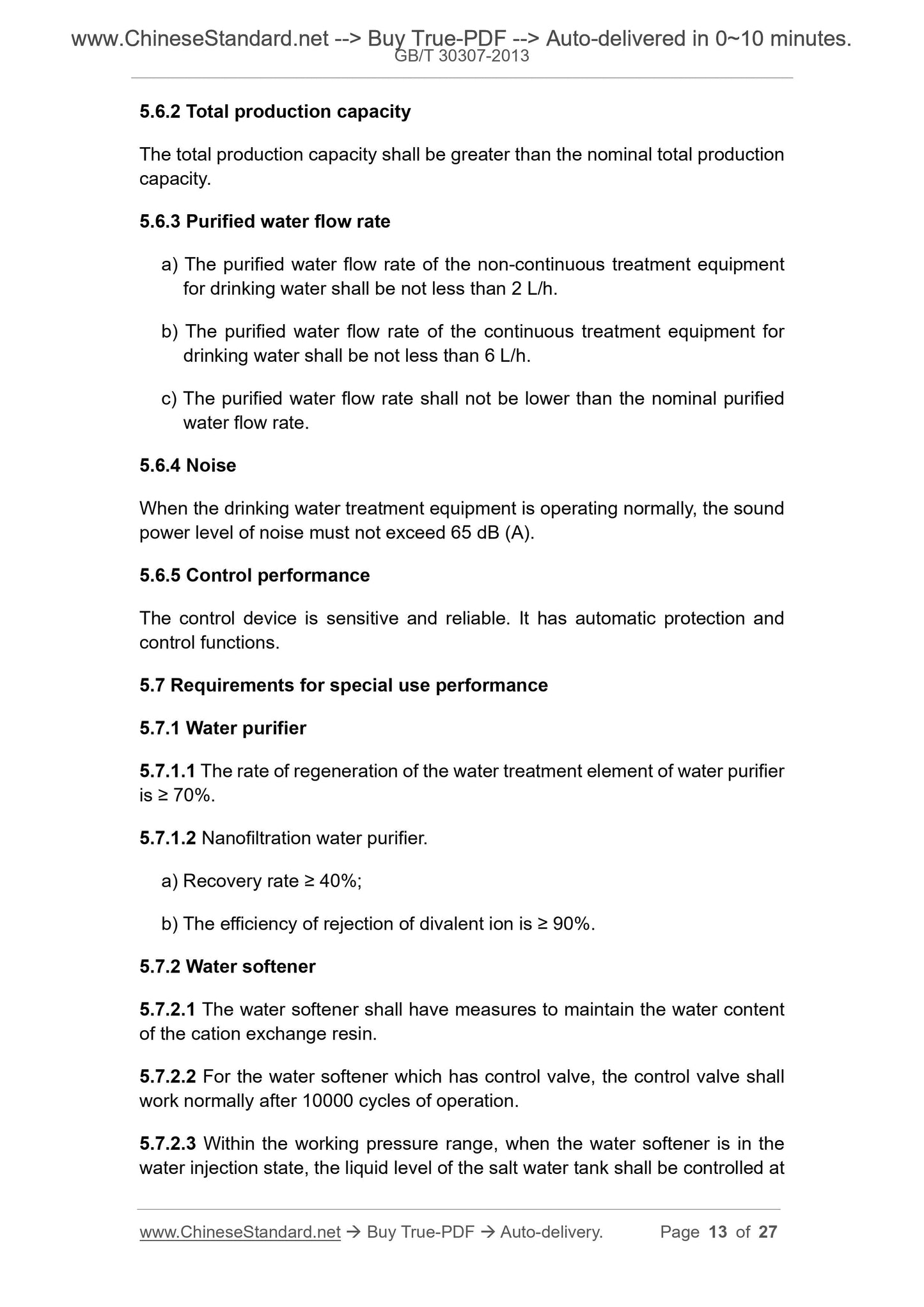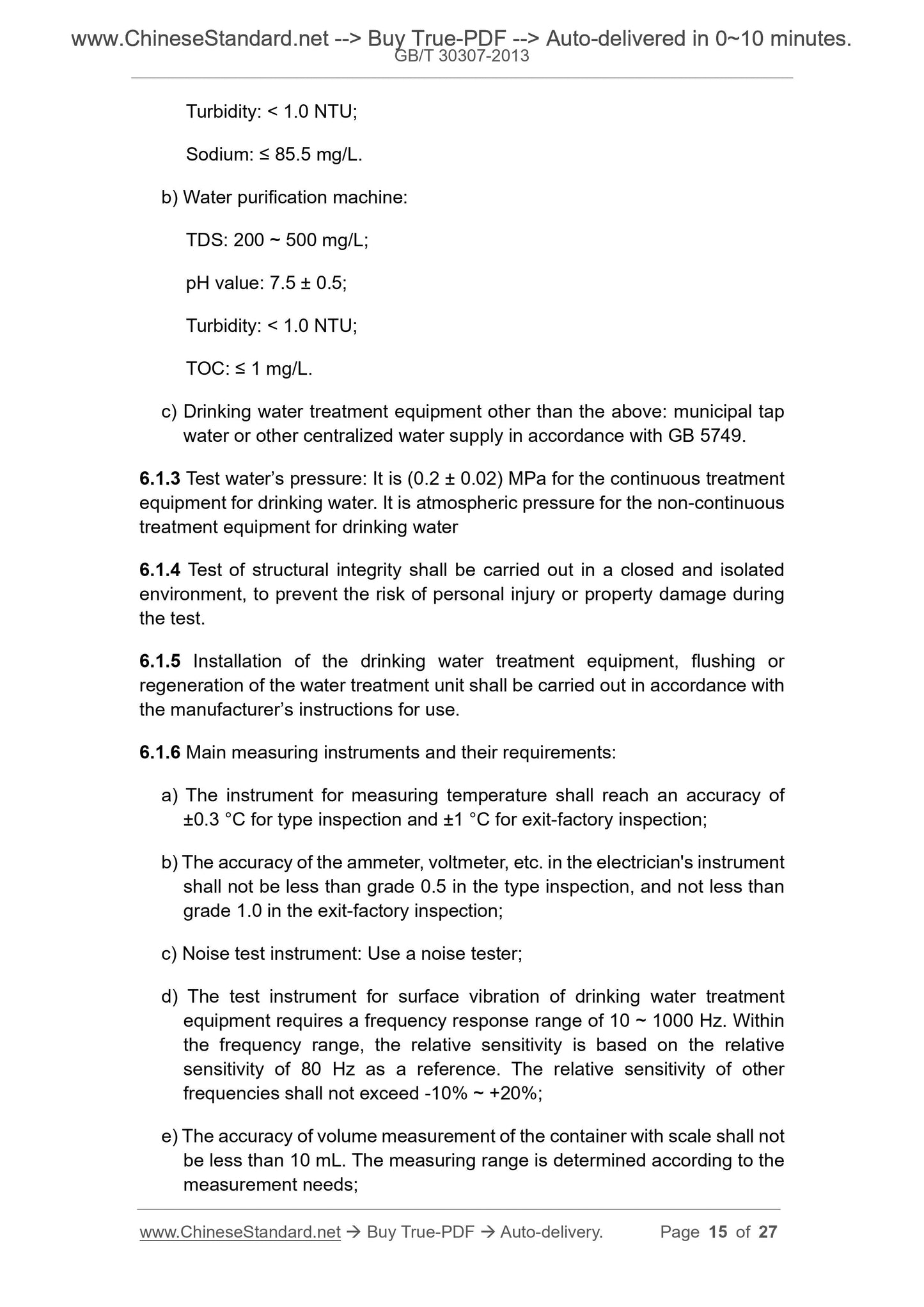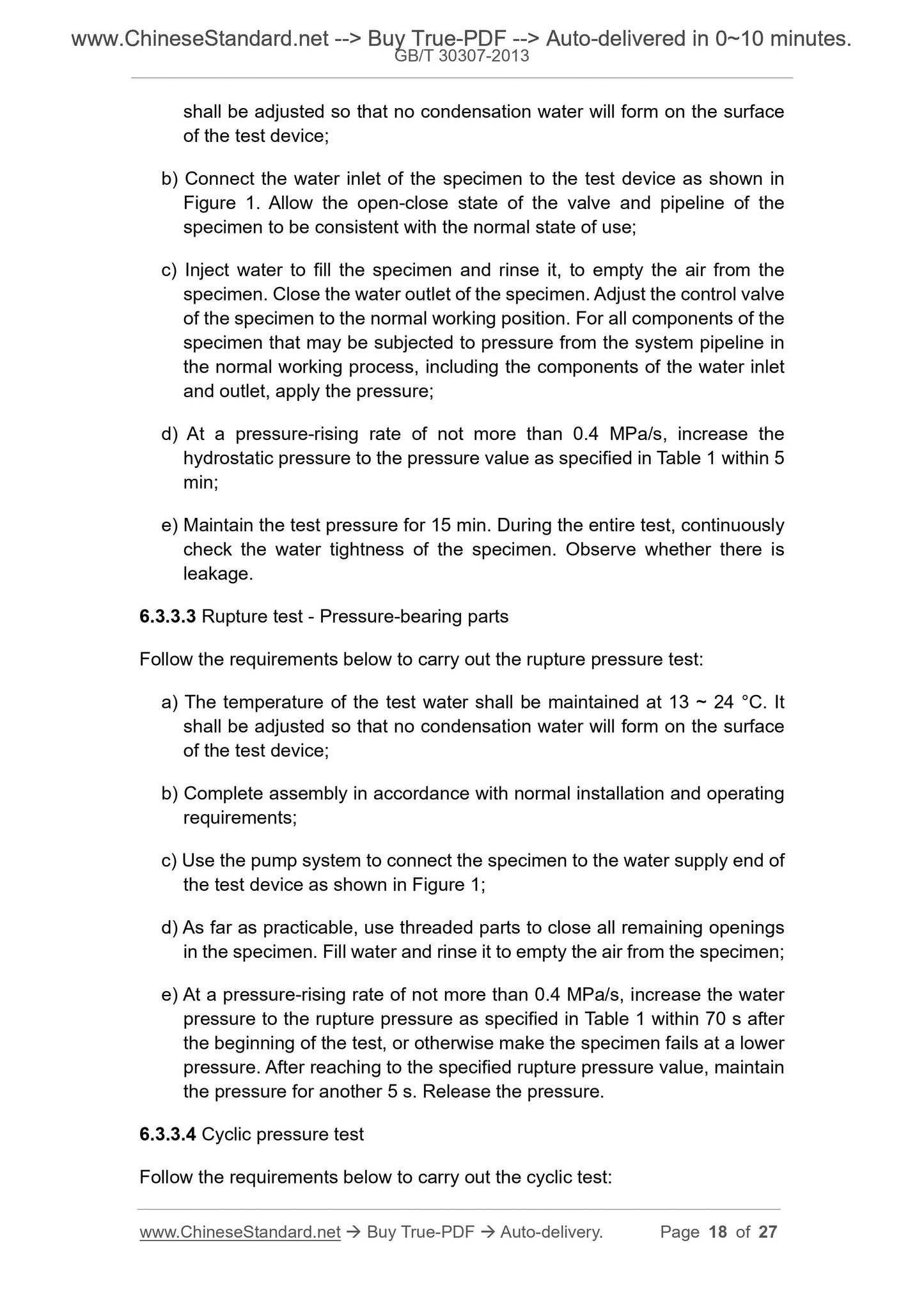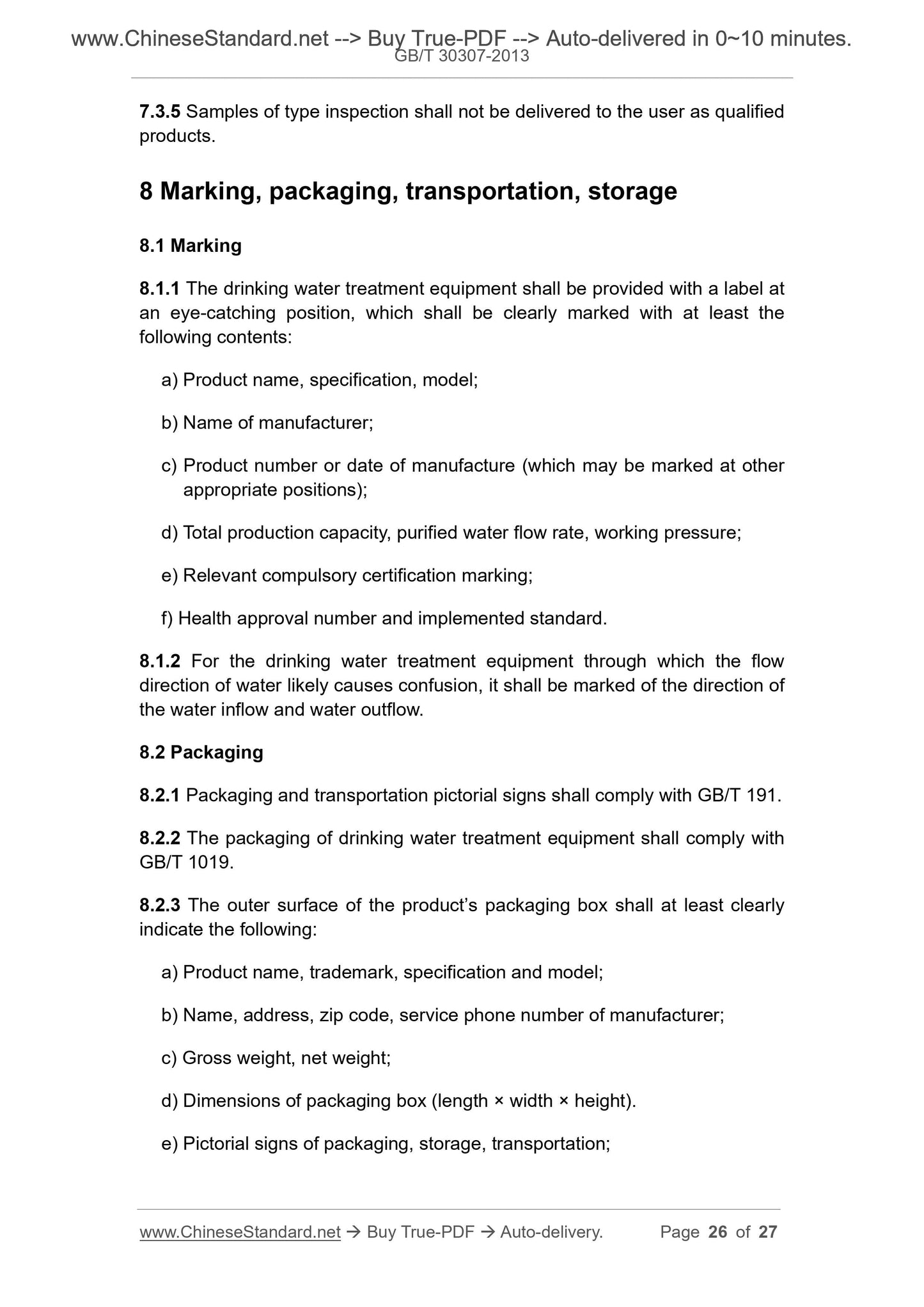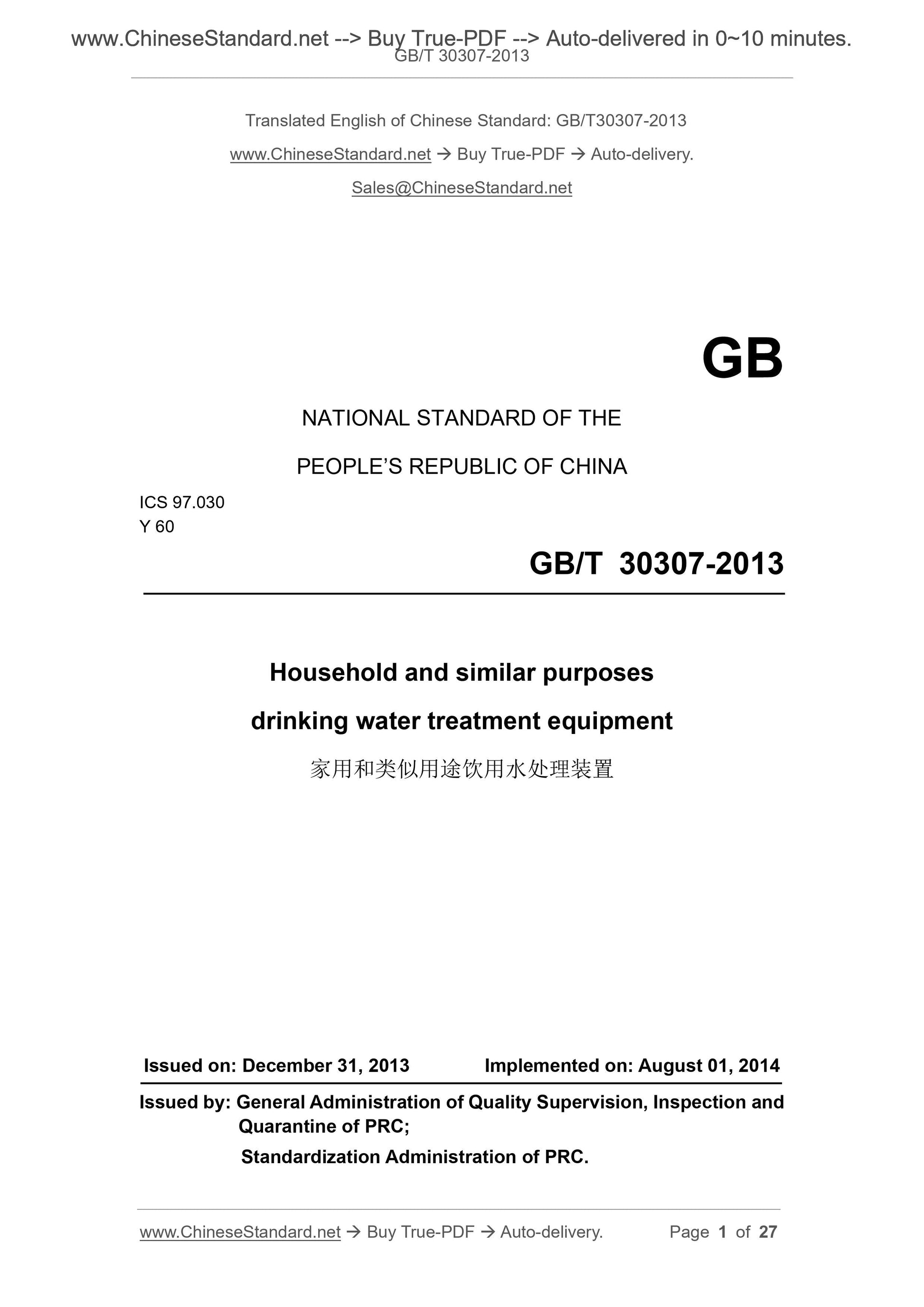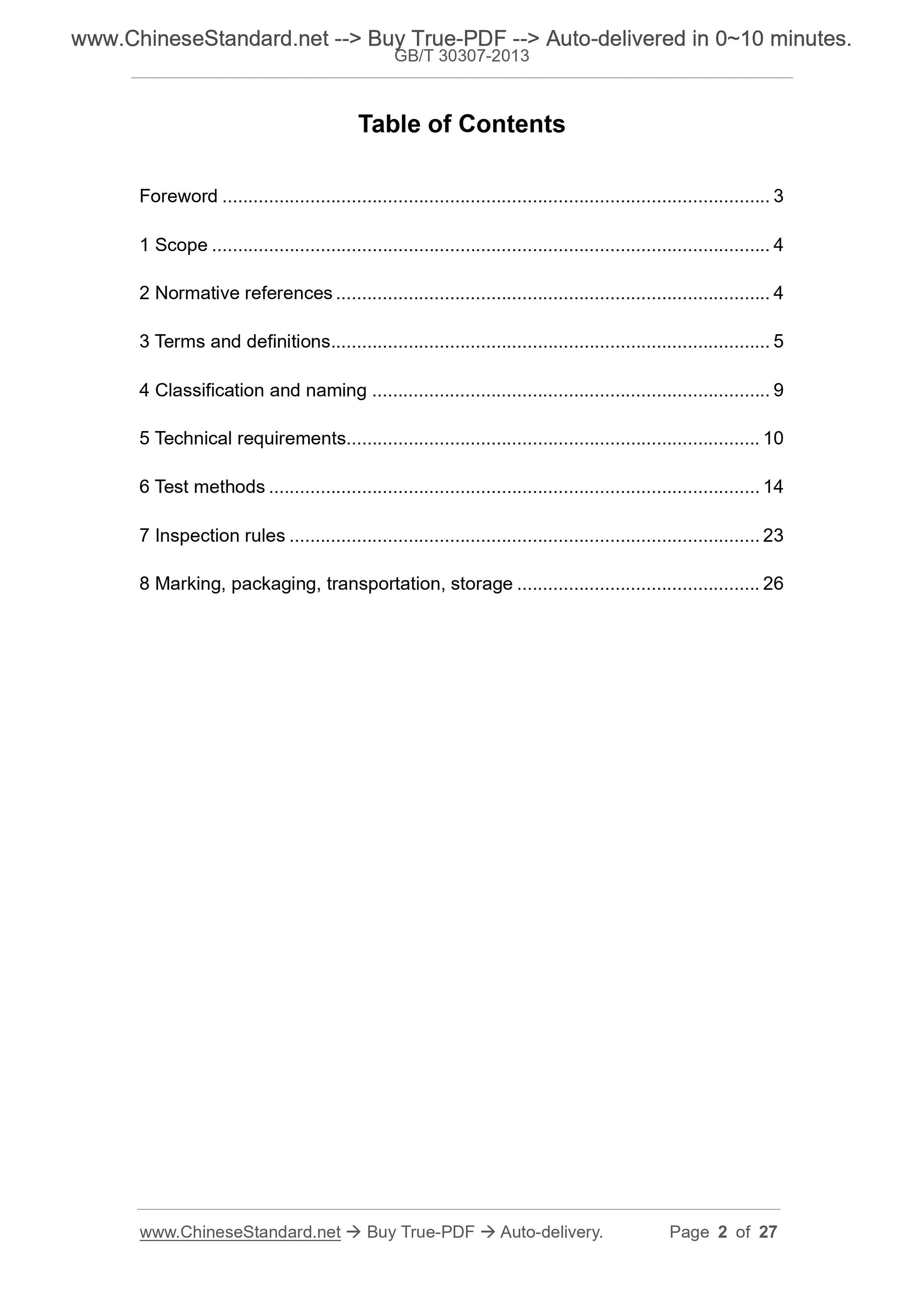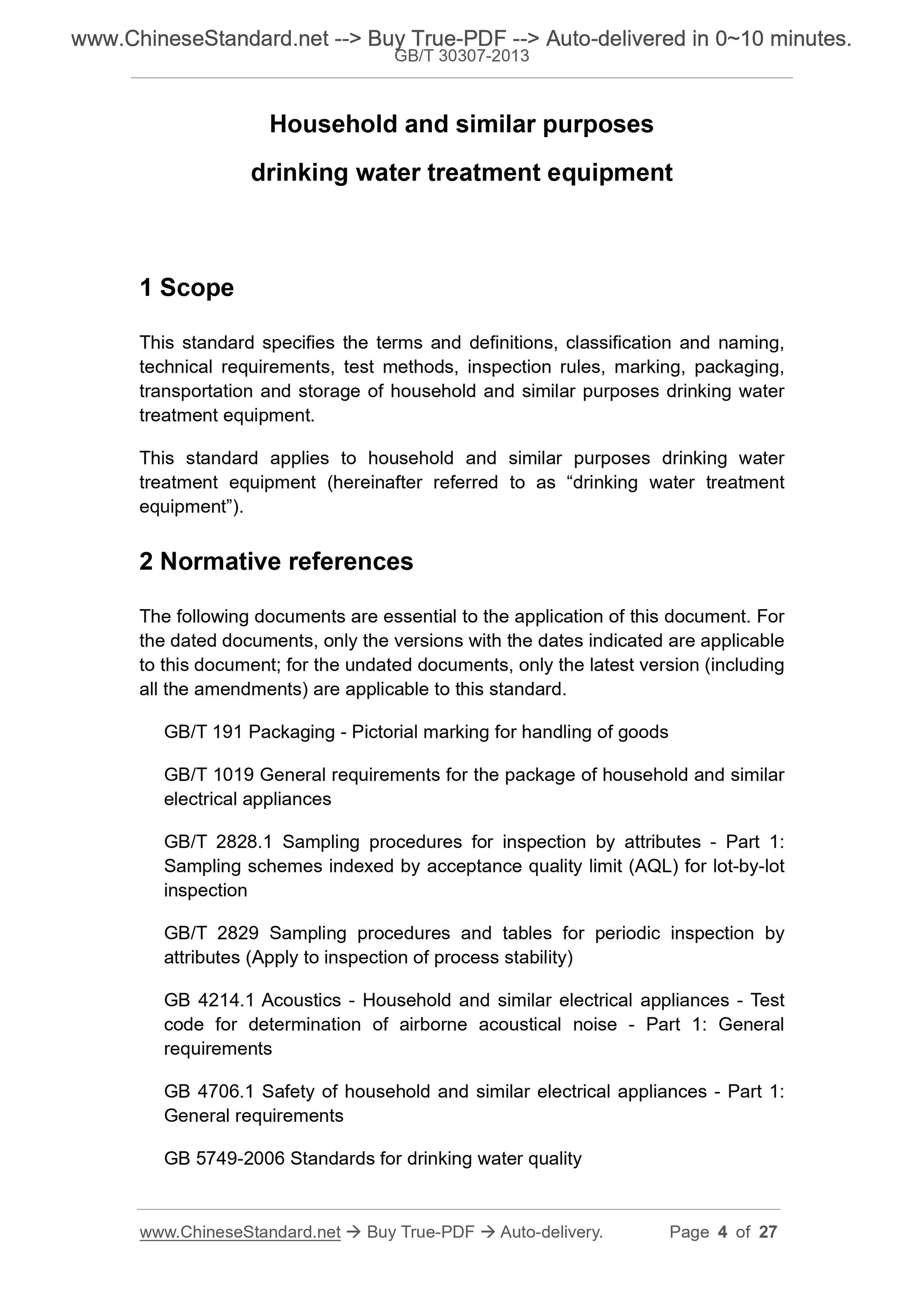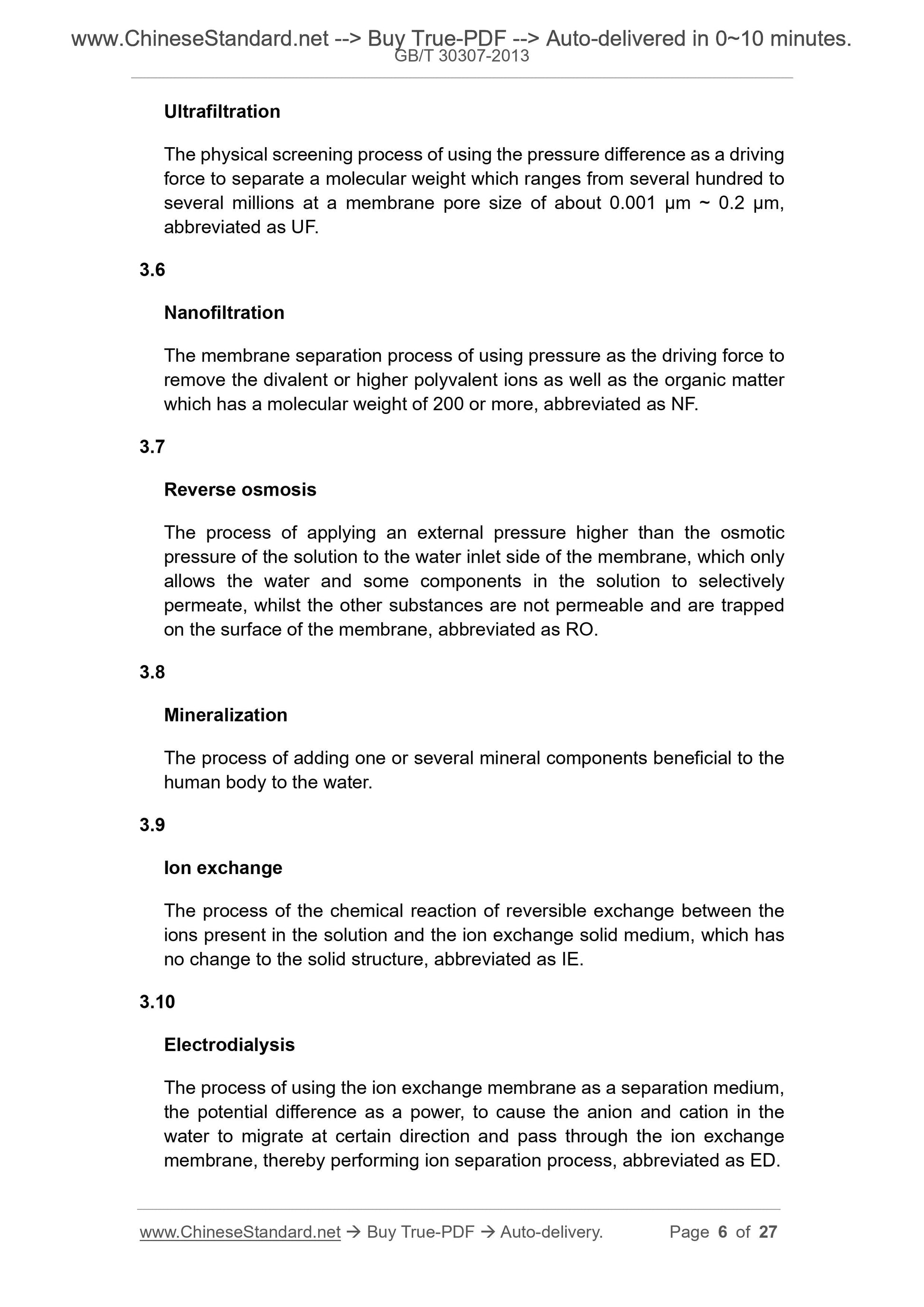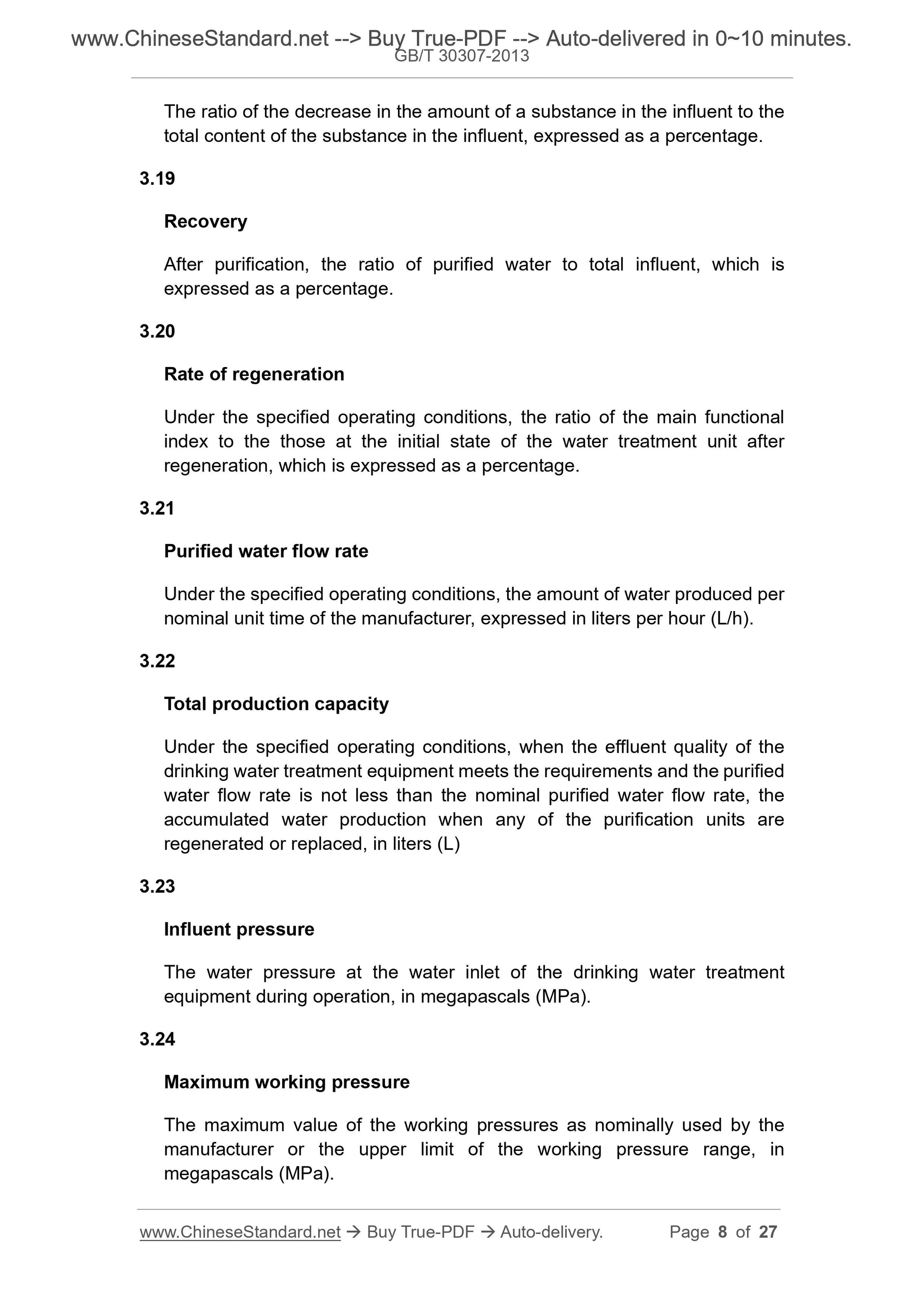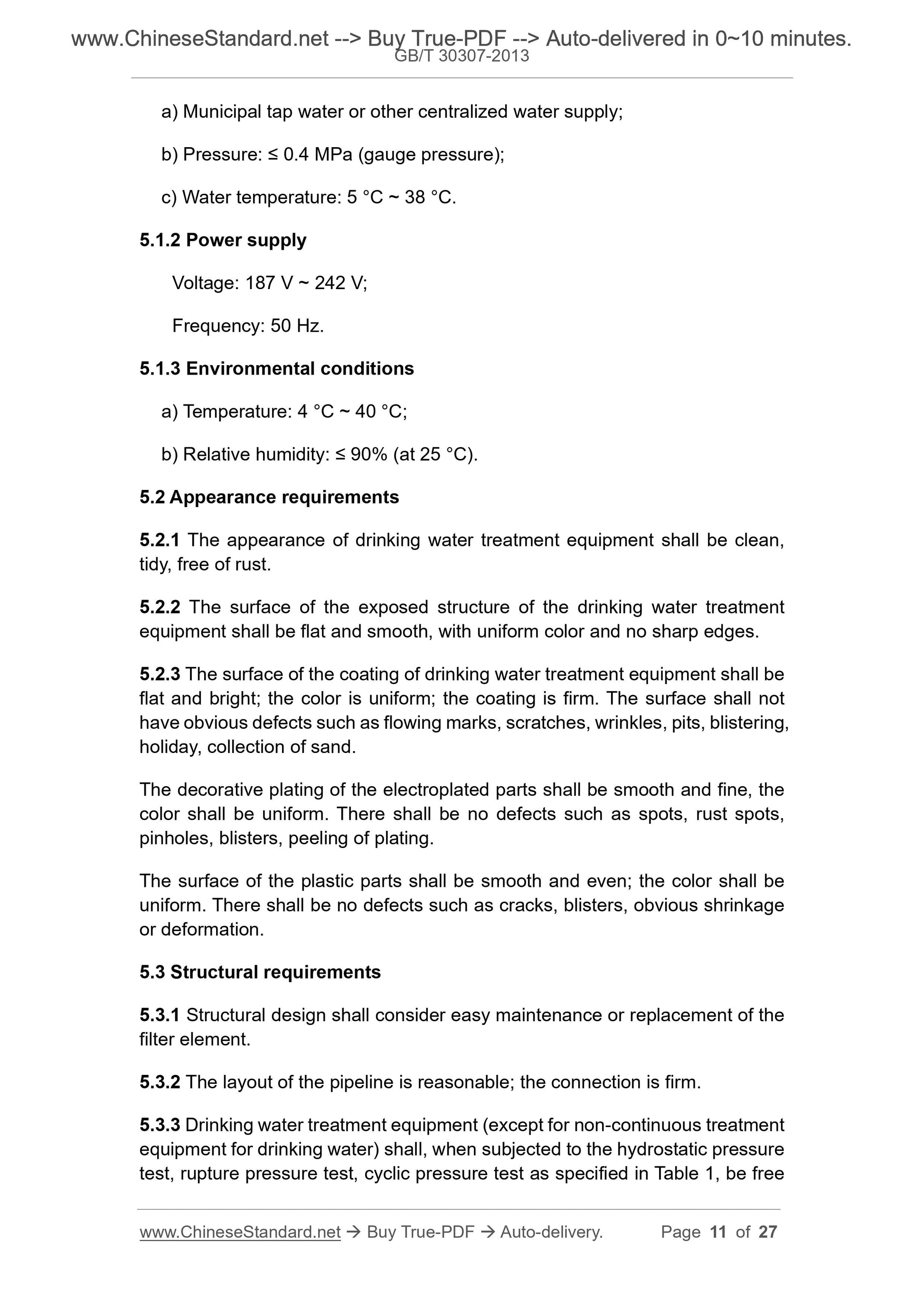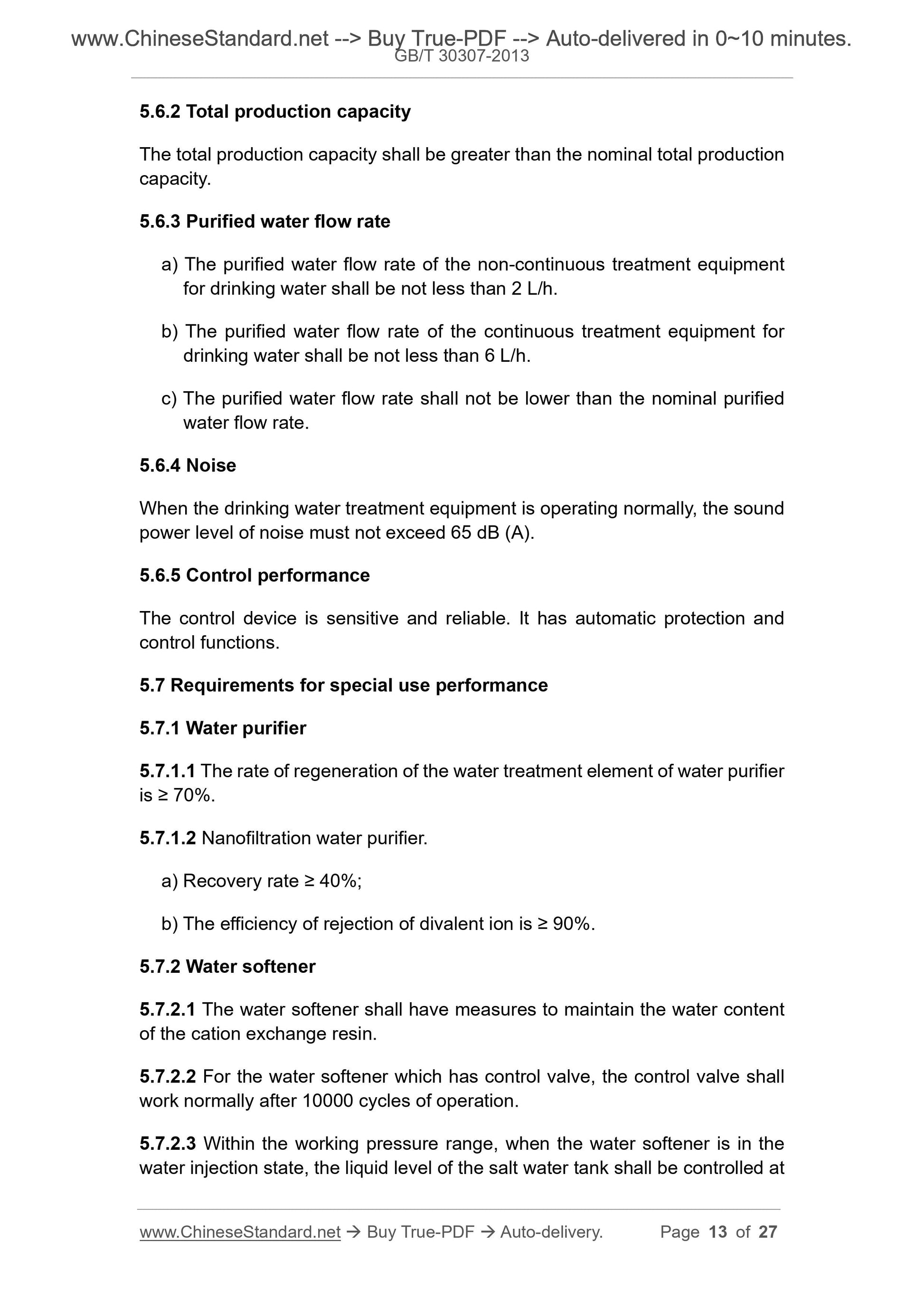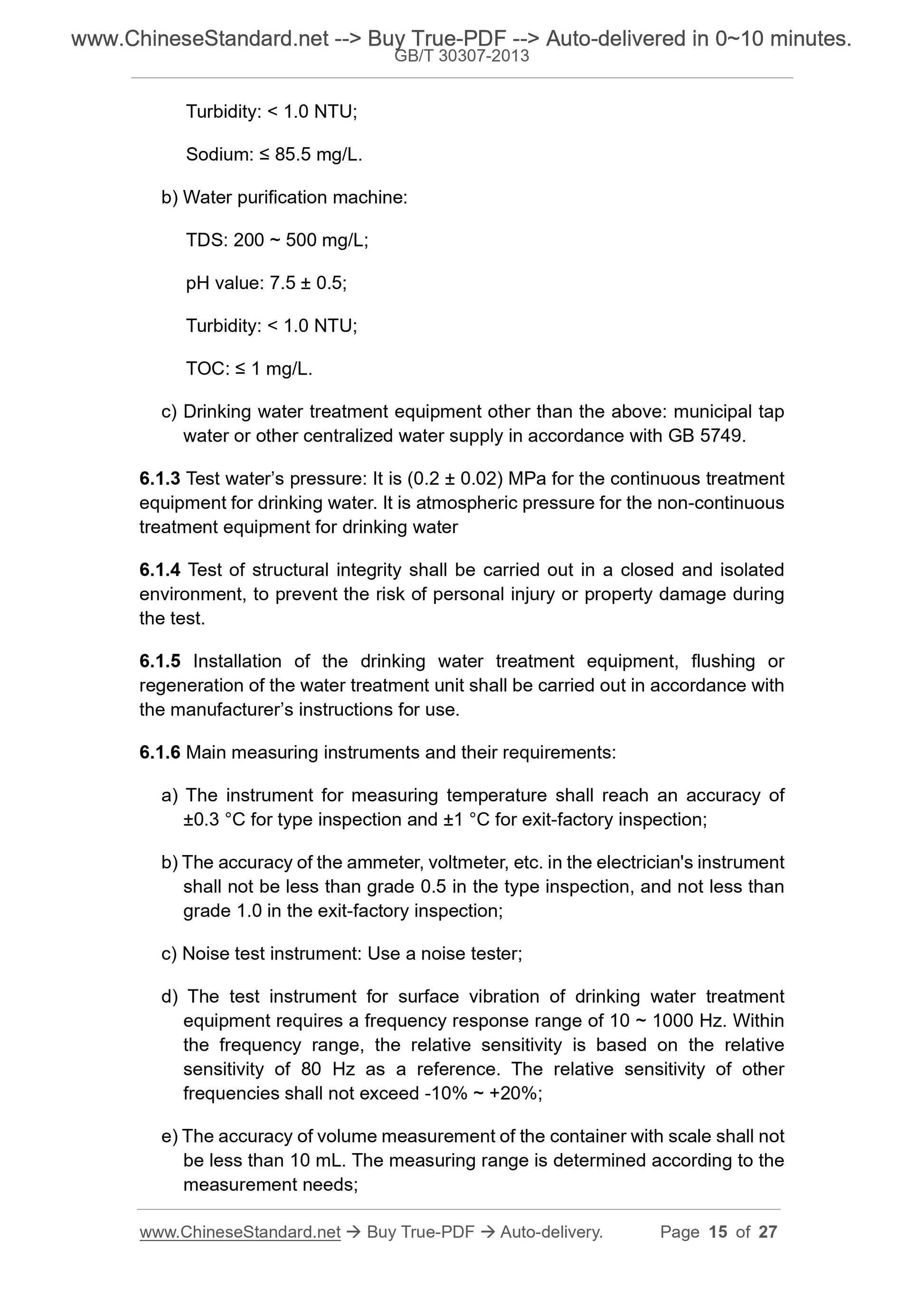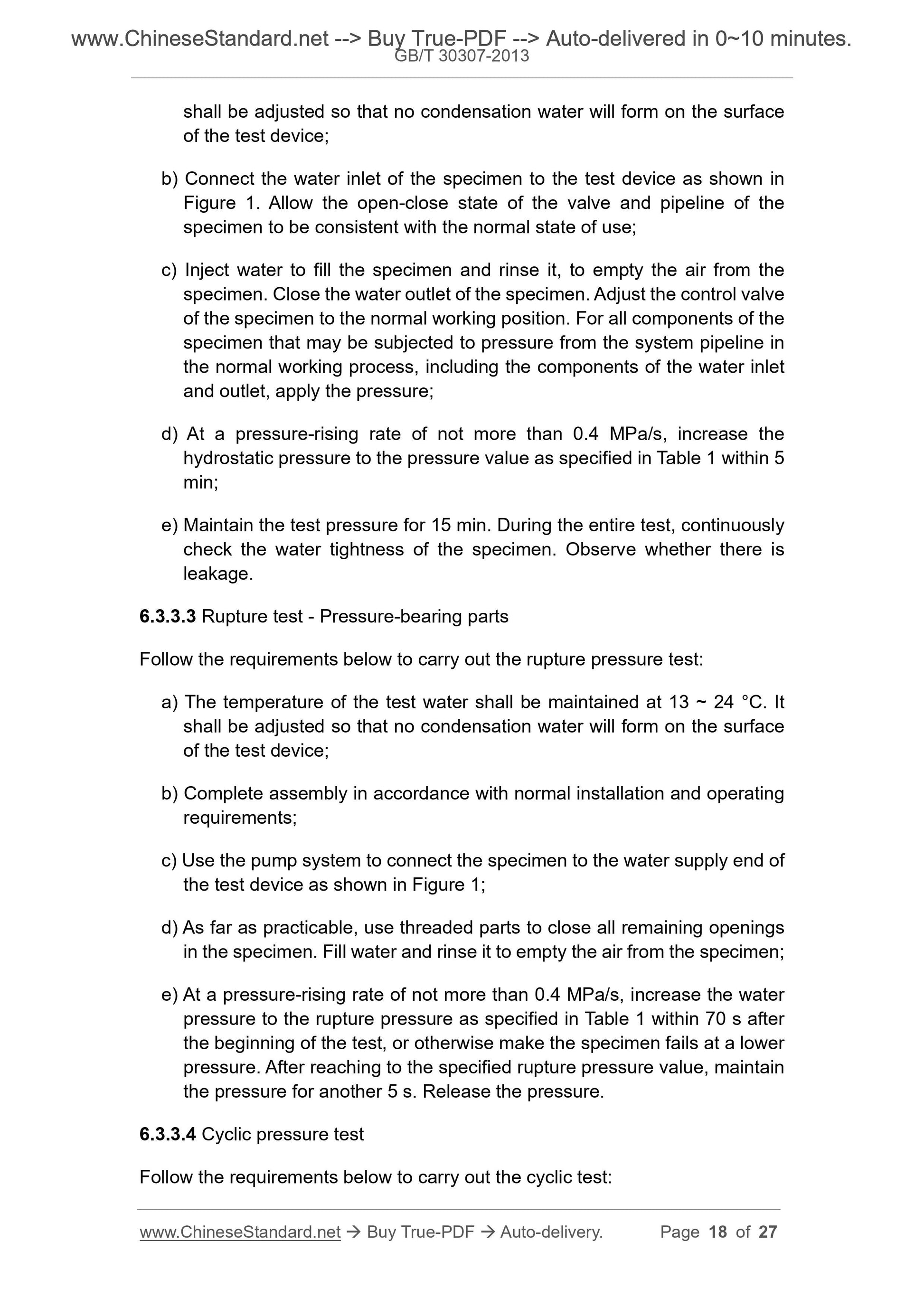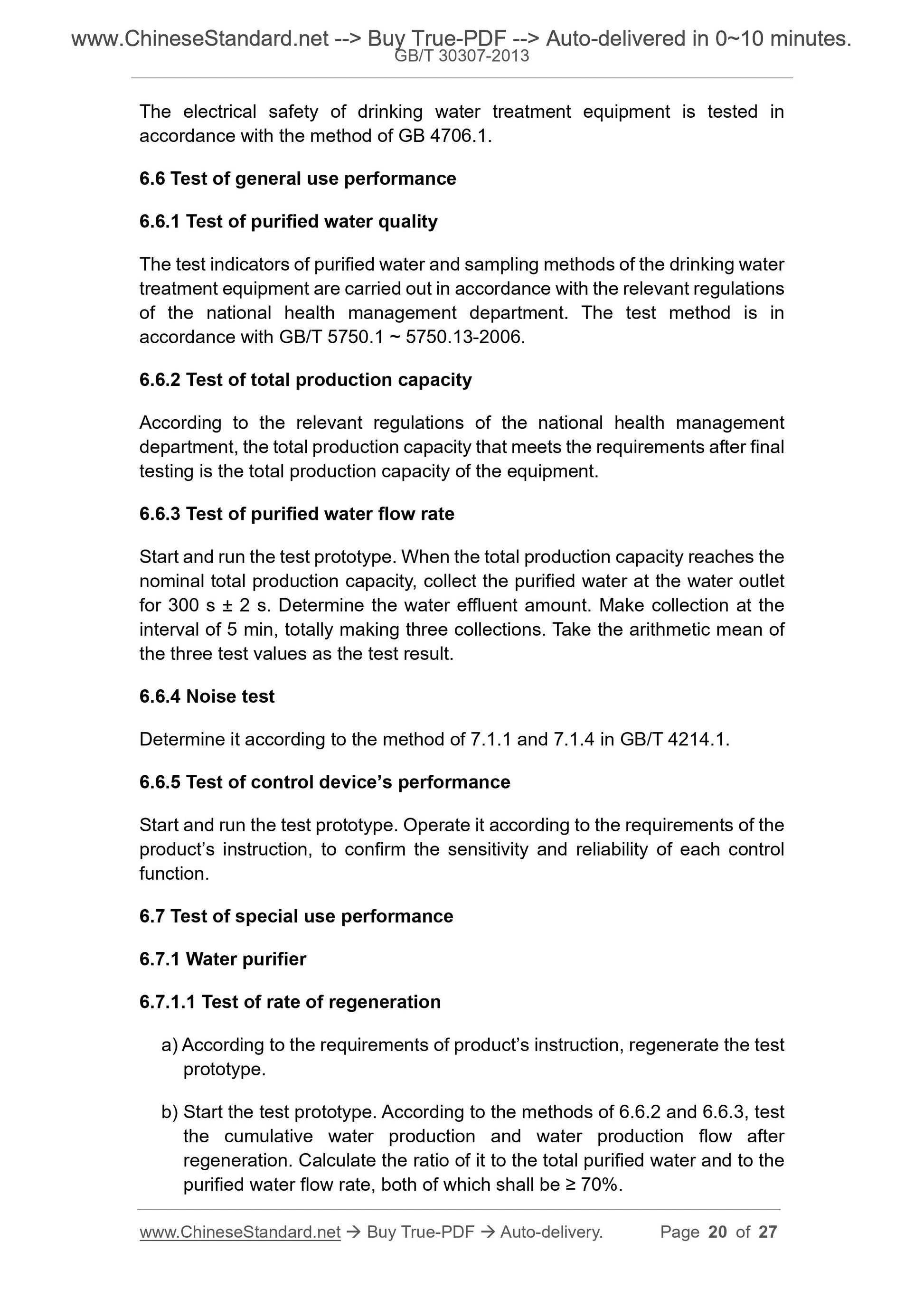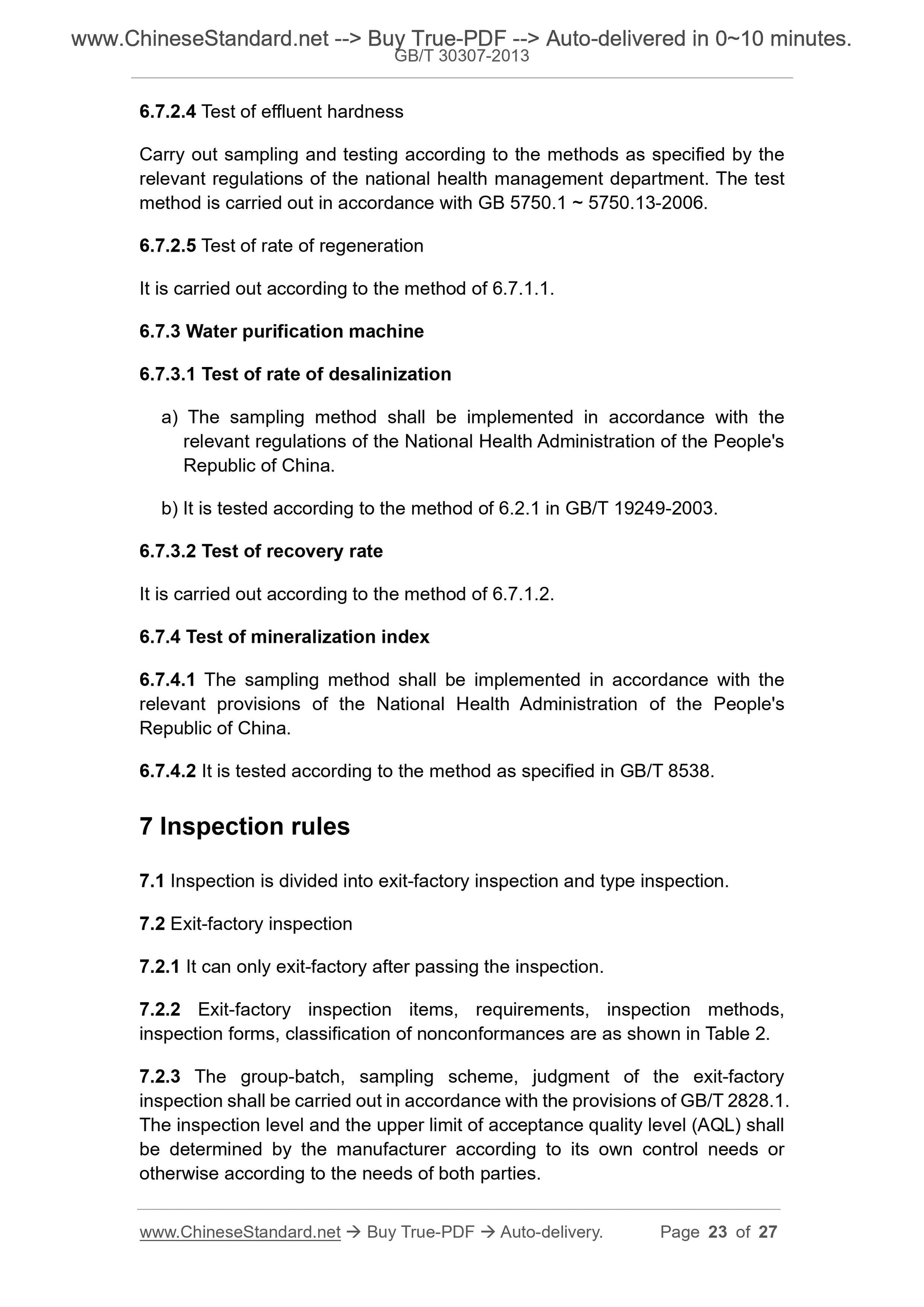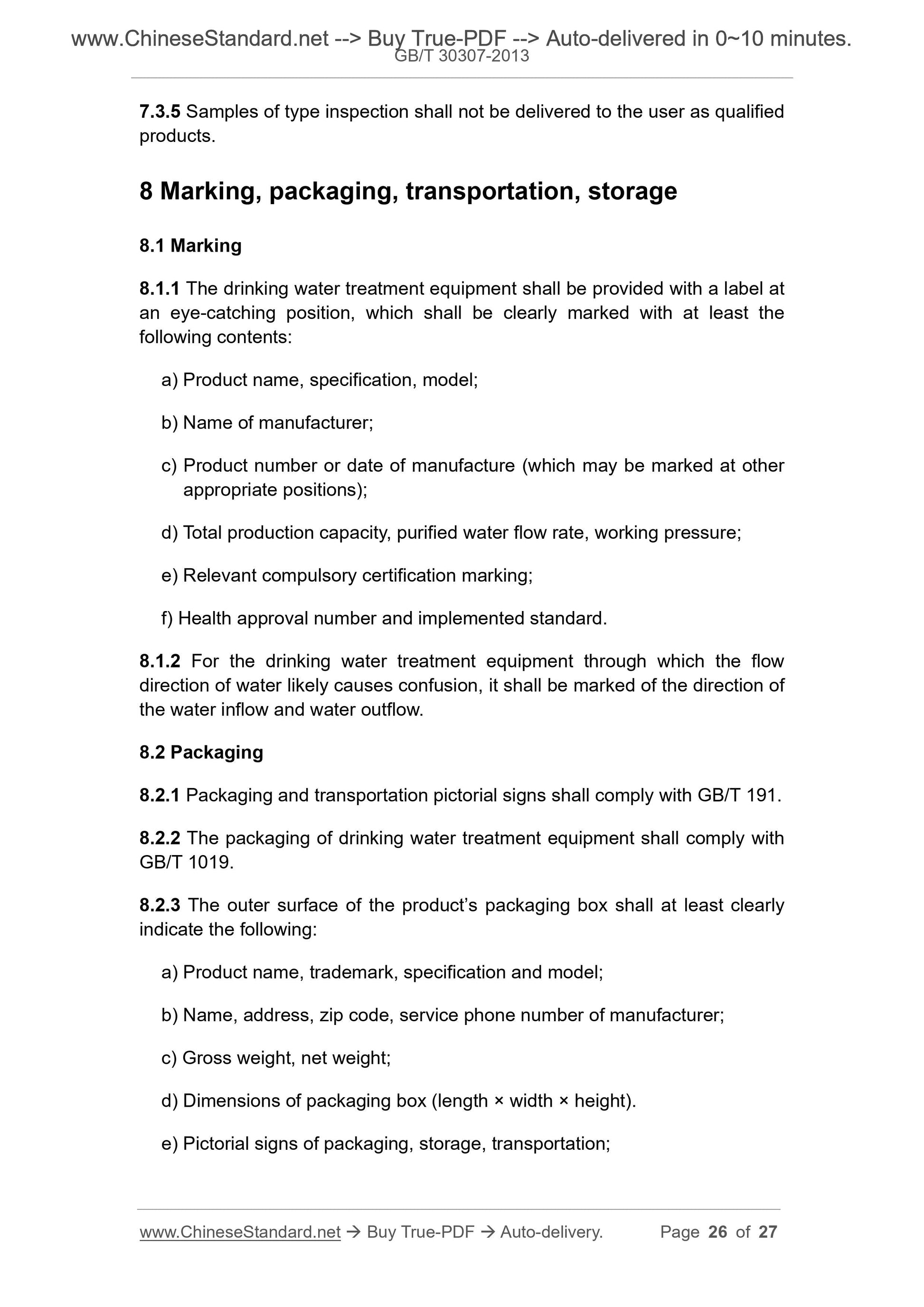1
/
of
12
www.ChineseStandard.us -- Field Test Asia Pte. Ltd.
GB/T 30307-2013 English PDF (GB/T30307-2013)
GB/T 30307-2013 English PDF (GB/T30307-2013)
Regular price
$115.00
Regular price
Sale price
$115.00
Unit price
/
per
Shipping calculated at checkout.
Couldn't load pickup availability
GB/T 30307-2013: Household and similar drinking water treatment equipment
Delivery: 9 seconds. Download (and Email) true-PDF + Invoice.Get Quotation: Click GB/T 30307-2013 (Self-service in 1-minute)
Newer / historical versions: GB/T 30307-2013
Preview True-PDF
Scope
This standard specifies the terms and definitions, classification and naming,technical requirements, test methods, inspection rules, marking, packaging,
transportation and storage of household and similar purposes drinking water
treatment equipment.
This standard applies to household and similar purposes drinking water
treatment equipment (hereinafter referred to as “drinking water treatment
equipment”).
Basic Data
| Standard ID | GB/T 30307-2013 (GB/T30307-2013) |
| Description (Translated English) | Household and similar drinking water treatment equipment |
| Sector / Industry | National Standard (Recommended) |
| Classification of Chinese Standard | Y60 |
| Classification of International Standard | 97.030 |
| Word Count Estimation | 19,149 |
| Quoted Standard | GB/T 191; GB/T 1019; GB/T 2828.1; GB/T 2829; GB/T 4214.1; GB 4706.1; GB 5749-2006; GB/T 5750.1; GB/T 5750.2; GB/T 5750.3; GB/T 5750.4; GB/T 5750.5; GB/T 5750.6; GB/T 5750.7; GB/T 5750.8; GB/T 5750.9; GB/T 5750.10; GB/T 5750.12; GB/T 5750.13; GB 8537; GB/T |
| Regulation (derived from) | National Standards Bulletin 2013 No. 27 |
| Issuing agency(ies) | General Administration of Quality Supervision, Inspection and Quarantine of the People's Republic of China, Standardization Administration of the People's Republic of China |
| Summary | This standard specifies the terms and definitions of household and similar purposes drinking water treatment devices, classification and nomenclature, technical requirements, test methods, inspection rules and signs, packaging, transportation and storage. |
Share
